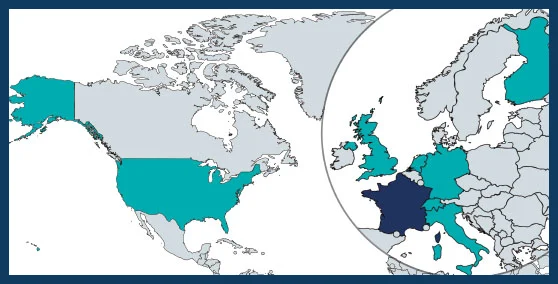03-2019 to 03-2022
€ 1,269,532
Wilfried Thuiller
wilfried.thuiller@univ-grenoble-alpes.fr
Université Grenoble Alpes/Centre National de la Recherche Scientifique (CNRS), FRANCE
University of Helsinki, FINLAND
German Centre for Integrative Biodiversity Research (iDiv), Halle-Jena-Leipzig, GERMANY
University of Rome “La Sapienza”, ITALY
Vrije Universiteit Amsterdam, THE NETHERLANDS
Swiss Federal Research Institute, Birmensdorf, SWITZERLAND
Duke University, Durham, USA
UNEP World Conservation Monitoring Centre, Cambridge, UNITED KINGDOM

Abrupt climate change and drastic land-use change, along with other human-made disturbances, have already triggered species extinctions, range shifts, and phenological changes. However, up to now research has mostly provided simplified predictions and scenarios that overlook many of the most relevant biological pro- cesses in ecological systems and do not report or assess uncertainties. First, most biodiversity models have been heavily criticised because they ignore basic mechanisms, such as biotic interactions and links between trophic levels (e.g. predator-prey). A second, strongly related limitation is that the relationship be- tween multi-trophic assemblages, ecosystem functioning and ecosystem services is poorly understood and modelled. Third, most current studies of biodiversity and ecosystem services focus on a single biodiversity model or one or a few climate scenarios. Finally, the conservation agenda needs a paradigm shift from focusing on species rarity and threat alone to also securing the structure and functioning of food-webs.
FutureWeb will integrate predictive biogeography, geography, biostatistics and trophic web ecology to derive an ensemble of scenarios of the impact of global change on multi-trophic vertebrate biodiversity, ecosystem functioning and the provision of ecosystem services in Europe. Through an effective involvement of relevant stakeholders, the project will adapt methodological choices, scenarios and indicators in such a way that the results are useful for conservation planning and decision-making support.
A set of harmonised ecological and environmental data across Europe will be developed, including species distribution data, species trait data and a fully re- solved species interaction matrix for all European vertebrates, as well as high resolution climatic and land use layers for both current and future conditions. In parallel, FutureWeb will develop, benchmark and extend novel multi-trophic biodiversity models to larger spatial scales and multi-trophic diversity data. These will be applied to all vertebrate species to project their potential distributions under ensembles of climate and land use scenarios while accounting for their trophic interactions. Using metabolic theory, the project will then integrate measures of multi-trophic ecosystem functioning and services in the ensemble predictions. Finally, it will identify areas that should be conservation priorities by combining the principles of systematic conservation planning with the ensembles of projections of biodiversity projections, multi-trophic functioning and ecosystem services.
FutureWeb will ensure an effective application and uptake of scenarios and mod- els in policy- and decision-making by involving policy makers, practitioners and other relevant stakeholders throughout the entire process of scenario develop- ment, selection of relevant biodiversity/ecosystem functioning and services variables, and evaluation of conservation options.